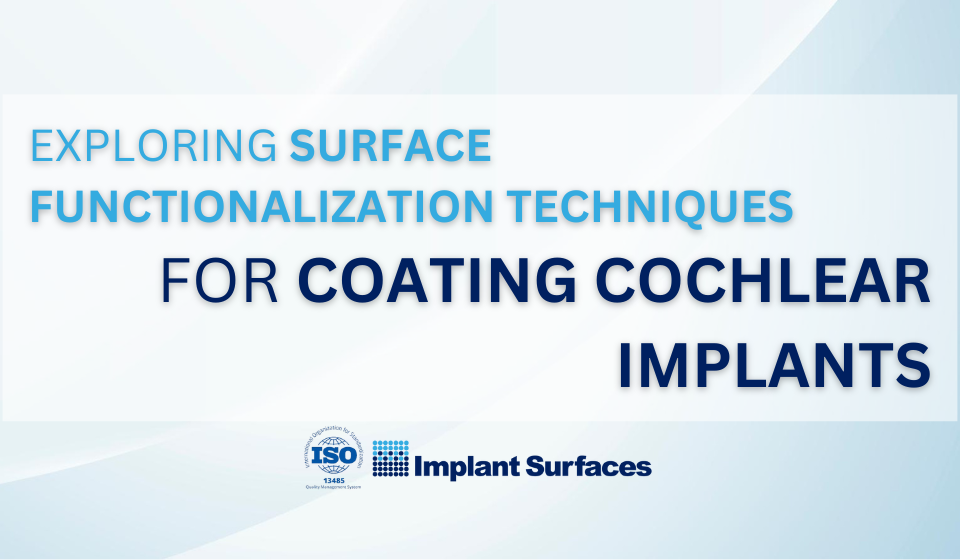
Advancing Orthopedic Implants: Harnessing Silver Nanoparticle Coatings for Enhanced Antibacterial Properties
April 27, 2024
Innovations in Surface Coating Techniques: Revolutionizing Osteointegration in Maxillofacial Implants
April 29, 2024In the realm of dental implantology, achieving successful osseointegration is paramount for long-term implant stability and patient satisfaction. However, the significance of soft tissue adhesion should not be overlooked, as it plays a crucial role in maintaining peri-implant health and preventing complications such as peri-implantitis. Surface roughness, a key factor in implant design, has been shown to exert a profound influence on soft tissue adhesion and integration around dental implants. In this article, we delve into the intricate relationship between surface roughness and soft tissue adhesion, exploring how surface characteristics can be optimized to enhance peri-implant soft tissue outcomes.
The Role of Surface Roughness:
Surface roughness refers to the irregularities and texture variations present on the surface of dental implants. These surface features can range from microscale to nanoscale dimensions and are typically introduced through processes such as sandblasting, acid etching, or laser ablation. Surface roughness plays a dual role in dental implantology, influencing both osseointegration and soft tissue adhesion. While optimal roughness promotes bone apposition and implant stability, excessive roughness can lead to increased bacterial adhesion and soft tissue inflammation. Therefore, achieving the right balance of surface roughness is crucial for favorable peri-implant soft tissue outcomes.
Impact on Soft Tissue Adhesion:
Surface roughness profoundly affects the adhesion, migration, and proliferation of soft tissue cells around dental implants. Studies have demonstrated that moderately rough implant surfaces promote greater fibroblast attachment and spreading compared to smooth surfaces. This enhanced cell adhesion is attributed to increased surface area and improved cell-substrate interactions, facilitated by micro- and nano-scale features. Additionally, surface roughness influences the formation of biological molecules, such as fibronectin and collagen, which play vital roles in mediating soft tissue attachment and integration. By modulating surface roughness, implant designers can manipulate the biological response of soft tissue cells, promoting more robust soft tissue adhesion and sealing at the implant-abutment interface.
Optimizing Surface Characteristics:
To optimize soft tissue adhesion, implant surfaces must be carefully engineered to exhibit appropriate roughness profiles. While traditional sandblasting and acid etching techniques have been effective in creating roughened surfaces, advancements in surface modification technologies offer greater precision and control over surface topography. For instance, laser microtexturing enables the creation of customized surface patterns tailored to enhance soft tissue integration. Furthermore, the incorporation of bioactive coatings and growth factors can augment soft tissue response, fostering rapid epithelialization and wound healing around dental implants. By tailoring surface characteristics to match the biological requirements of peri-implant soft tissues, implant surfaces can promote optimal soft tissue adhesion while minimizing the risk of peri-implant complications.
Conclusion:
Surface roughness plays a pivotal role in influencing soft tissue adhesion and integration around dental implants. By engineering implant surfaces to exhibit optimal roughness profiles, clinicians can enhance peri-implant soft tissue outcomes and improve the long-term success of dental implant therapy. Through a deeper understanding of the biomechanical interactions between implant surfaces and soft tissues, researchers and implant manufacturers can continue to innovate and refine surface modification strategies, ultimately advancing the field of implant dentistry and enhancing patient care.




